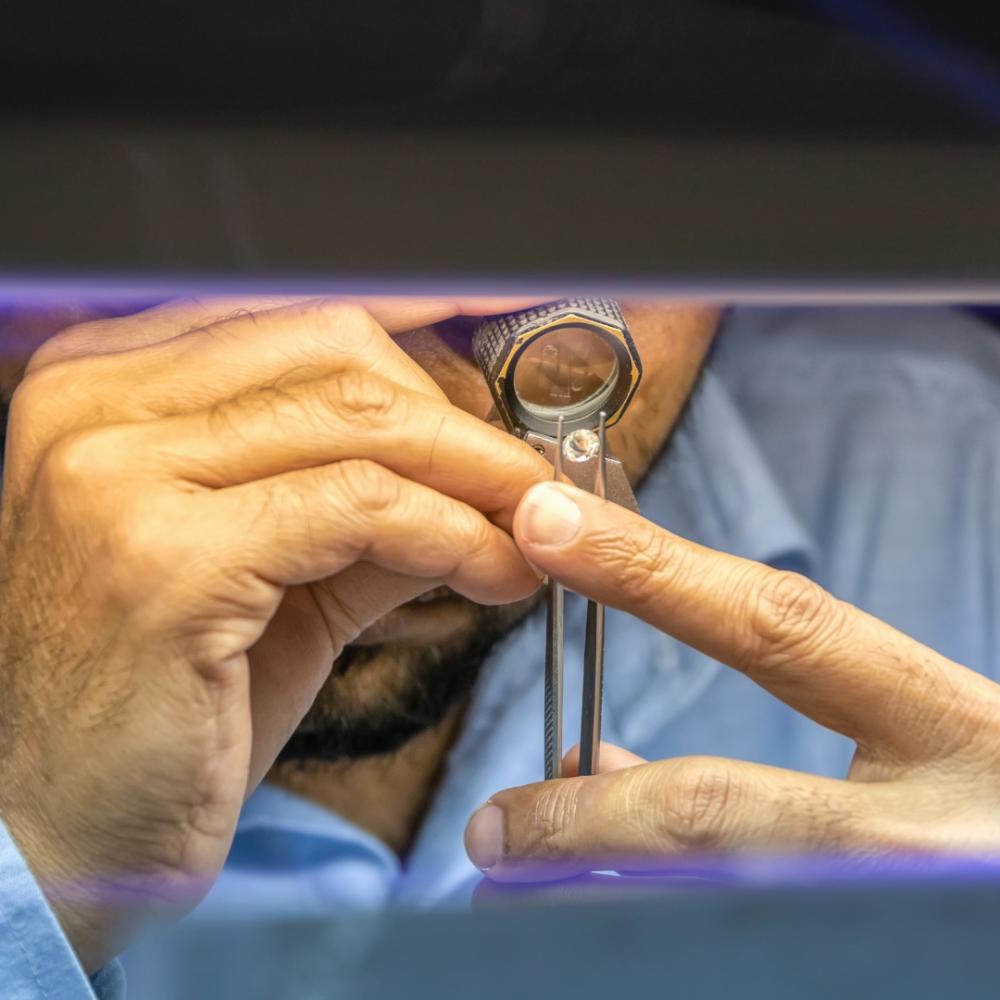4 C’s and choosing the right Diamond
When it comes to choosing Diamonds for your Jewellery there is a minefield of information and knowledge. They come in various shapes, sizes, colours and each one will have individual characteristics. Below, we talk about what the 4 c’s are and what to look for when choosing the perfect stone for your Jewellery.
What are the 4 C’s?
When we talk about the 4 C’s we mean Colour, Clarity, Cut and Carat Weight. These are 4 key things you should think about when purchasing Diamonds.
Colour:
When referring to the colour of a Diamond, we actually mean the lack of colour. The whiter/more colourless the stone is, the more value it holds. Diamonds are Graded from D-Z on the colour scale, D being a Colourless Diamond and stones graded closer to Z will have a Yellow/Brown hue.
Clarity:
Clarity refers to the amount of inclusions (internal) or blemishes (external) within a Diamond. Diamonds are created from carbon being exposed to extensive heat and pressure deep below the ground's surface and this process will create characteristics within each Diamond. Many inclusions will be difficult to see with the naked eye and by anyone other than a Diamond grader. The Clarity grading will depend on many factors including the number, size, nature and position of these characteristics and how they will affect the overall appearance of the Diamond.
No Diamond is perfect but the purer the stone, the higher the clarity will be.
Cut:
When we talk about the cut, you may think of the Diamond shape, round, square, heart etc. Infact, when we talk about the cut, we mean how well the Diamond refracts light. There is real artistry required to create a stone's proportions, symmetry and polish to ensure an amazing return of light, only possible in a Diamond.
Of all of the 4 C’s the cut is the most complex and difficult to analyse. The proportions of the facts is how successfully a Diamond interacts with light to create visual and desired effects such as:
Brightness - Internal and External white light reflected from the Diamond
Fire - The scattering of the white light into all of the colours of the rainbow
Scintillation - The amount of sparkle produced by the Diamond and the pattern of the light and dark areas caused by the reflection within
Carat Weight:
This typically means how much the Diamond weighs. A metric Carat is equivalent to 200 milligrams. And each Carat is subdivided into 100 ‘points’. Jewellers may refer to anything under 1 carat by its ‘points’. For example, 0.50 carats may be referred to as a fifty pointer.
Anything above 1 carat will simply be referred to in carats and decimals, for example a 1.05 carat will be referred to as one point oh five carats.
The higher the Carat weight, the higher the cost. This is due to the bigger in size, the more desirable and rare the Diamond is. This does not however mean that 2 Diamonds measuring the same carat weight will be the same in cost or value. This is down to other factors such as the Colour, Clarity and Cut.



